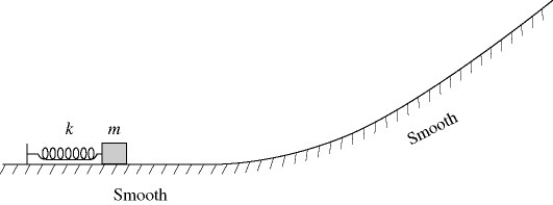Multiple Choice
A box of mass m is pressed against (but is not attached to) an ideal spring of force constant k and negligible mass,compressing the spring a distance x.After it is released,the box slides up a frictionless incline as shown in the figure and eventually stops.If we repeat this experiment with a box of mass 2m 
A) the lighter box will go twice as high up the incline as the heavier box.
B) just as it moves free of the spring, the lighter box will be moving twice as fast as the heavier box.
C) both boxes will have the same speed just as they move free of the spring.
D) both boxes will reach the same maximum height on the incline.
E) just as it moves free of the spring, the heavier box will have twice as much kinetic energy as the lighter box.
Correct Answer:

Verified
Correct Answer:
Verified
Q45: Block 1 and block 2 have the
Q46: In the figure,a very small toy race
Q47: A tennis ball bounces on the floor
Q48: A potential energy function is given by
Q49: A box of mass m is pressed
Q51: Is it possible for a system to
Q52: A 5.00-kg object moves clockwise around a
Q53: A 1.86-kg block is held in place
Q54: An athlete stretches a spring an extra
Q55: A small hockey puck slides without friction